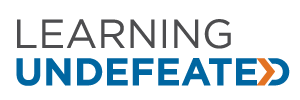
September 15, 2021, from EdTech | by Rebecca Torchia | read it >
K–12 classrooms are supplemented with lessons on science, technology, engineering and math thanks to mobile STEM labs.
Despite being one of the most in-demand sectors of the job market, STEM education is frequently subpar in districts serving minority students. As of 2018, students did not have access to Algebra II lessons in a quarter of high schools that primarily serve Black and Hispanic students, according to an article in Forbes. The lack of access to higher-level science, technology, engineering and math classes in K–12 education shows. Minority populations are consistently underrepresented in STEM fields, with Hispanic and Black employees making up only 8 and 9 percent of the STEM workforce, respectively. Native Americans, Native Hawaiians and Pacific Islanders are even more scarcely involved in the STEM workforce, making up only 3 percent.
According to a White House fact sheet, access to opportunities outside of the classroom is one of the best ways to get minority students into STEM, yet studies find that more than 327,000 students in the U.S. don’t have this type of access.
“We also know that students from low-income households begin their education at a disadvantage and are more likely to struggle with engagement, so while schools and teachers are working really hard to meet those most vulnerable learners where they’re at and their needs, we’re dedicated to helping them with that by bringing these really cool resources and experiences to their schools as well,” says Jennifer Colvin, vice president of education for Learning Undefeated, a nonprofit bringing STEM to students through mobile labs, among other means.
Such mobile STEM labs have cropped up around the country. These portable classrooms bring science, technology, engineering and math activities to students who might not otherwise have the opportunity to meaningfully engage in STEM lessons.
Mobile Labs Boost Curiosity and STEM Literacy
Mobile STEM labs are some students’ first exposure to advanced technologies such as robotics, 3D printing, flight simulators, augmented reality and more. By getting students excited about these technologies, mobile labs open the door to possible career paths in STEM and continued STEM education.
“We allow them to have 20 minutes’ time in the lab, so students are in and out,” says Kuldeep Rawat, dean of the School of Science, Aviation, Health and Technology at Elizabeth City State University. “But the students don’t want to leave the lab.”
Rawat, who is also the site director for the university’s NASA K–12 Aerospace Academy Program, says the program’s mobile lab was developed after ECSU realized they could provide more access to STEM and aerospace lessons. The university has a brick-and-mortar lab, but it reaches more students with its mobile lab, which uses the National Center for Women and Information Technology’s “Roadshow-In-A-Box” outreach concept. This STEM lab on wheels travels throughout the 21 counties of Northeastern North Carolina.
“The goal of the project is to improve STEM literacy and expose the entire K–12 student population to the latest and greatest technology when it comes to STEM,” Rawat says.
Whether seeing this technology for the first time or understanding these lessons through a new lens, the mobile STEM labs create curiosity and reinvigorated interest in STEM careers.
“The whole goal really is for us to create a motivating and fun experience for students, so they think about STEM in a new way,” Colvin says. “Then there’s general career awareness: Helping them realize that there are these jobs available to them. They could work in these really cool fields or do these types of things themselves.”
The Mobile Lab Technologies and How They Function
The idea of a mobile unit full of valuable technology may be daunting, especially to those who remember Newton’s first law of motion: A body at rest will remain at rest, and a body in motion will remain in motion unless acted upon by an external force. But the tech in ECSU’s and Learning Undefeated’s mobile labs is secure and, according to Colvin, more cost-efficient than a brick-and-mortar lab.
“It’s a shared resource, so the financial or capital investment can be shared among the school systems, and there are some good models out there for that,” she says. “Maybe you want to build a computer lab, and you don’t have the funds to do it in all of your schools. You could put your computer lab on a mobile platform and share it among the schools in your district.”
MORE ON EDTECH: Cloud-based technology expands STEM’s reach.
The Learning Undefeated labs include technology such as projection mapping, touch-screen walls, augmented reality and oversized TV screens, among other tech. Students learn about everything from cybersecurity to extraterrestrial exploration. Learning Undefeated’s Explorer Lab includes tablets on which students can engineer a Mars rover. The learning process is game-based, and in addition to building a virtual rover students also learn about Morse code and the surface conditions of the Red Planet.
ECSU’s mobile lab, meanwhile, brings aerospace and aviation lessons to students in North Carolina. It features flight and drone simulators in addition to 3D scanning, 3D printing, coding and more. Rawat says the university sustains and grows the program through grants. “Every time we see a new technology out there the students need to learn, we add that as well,” he says.
While the mobile lab buses can’t remain in a school’s parking lot forever, they help give students STEM exposure when they would otherwise have none. These early introductions can set the tone for a student’s future, and each mobile lab organization works with teachers to help them fan the spark of excitement in learners.






